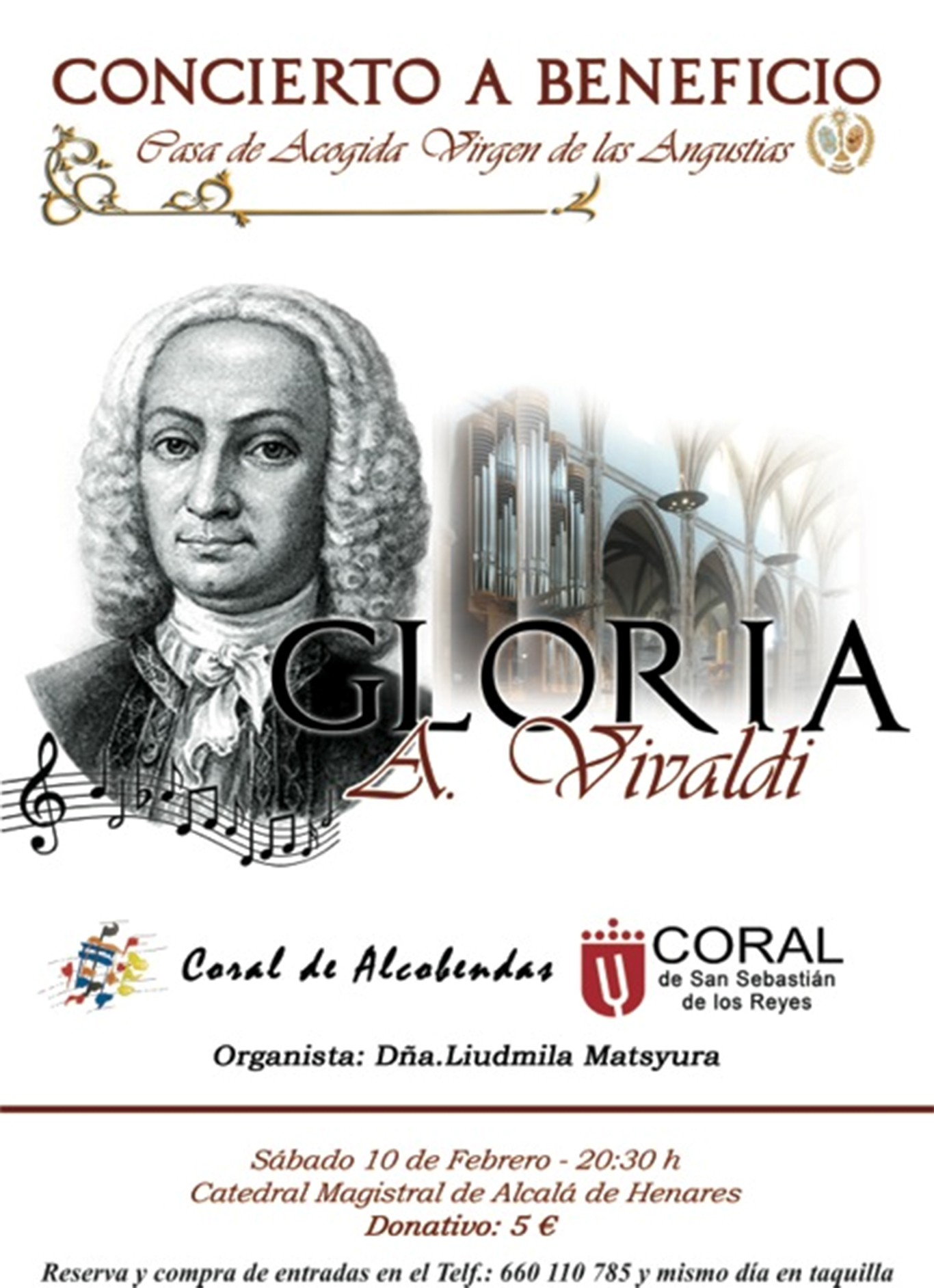

Kalmus Classic Edition vocal soli parts and choral scores are available separately through Alfred Music K06497. Although Vivaldi did compose a substantial body of sacred music, it was never his main interest. Title Composer Vivaldi, Antonio: Opus/Catalogue Number Op./Cat. The final movement, Cum Sancto Spiritu is Vivaldi's updated arrangement of Ruggieri's Gloria of 1708. Includes: Gloria in Excelsis, Et in Terra Pax, Laudamus Te, Gratias Agimus Tibi, Propter Magnam Gloriam, Domine Deus, Domine Fili Unigenite, Domine Deus, Agnus Dei, Qui Tollis, Qui Sedes ad Dexteram, Quoniam tu Solus Sanctus, and Cum Sancto Spiritu. Although they are now often performed at sacred events including Christmas, the Glorias remained in relative obscurity until a revival performance by Alfredo Casella during “Vivaldi Week” in Siena in 1939. Of the three recorded Glorias Vivaldi wrote, only two survive (RV 588 and RV 589), while RV 590 is presumably lost. The opening movement from Vivaldis Gloria is a choral standard that is a recognized masterwork of the Italian Baroque period. The first was a rather different adaptation in one of his earlier works, which was also a setting of the Gloria.The most famous of several Vivaldi works entitled Gloria (RV 589), this edition by Clayton Westermann includes a short preface to explain performance practice. The Ruggieri fugue may be an unexpected choice for the ending of this work, but Vivaldi seems to have been so impressed with it that this was the second time that he used it. Vivaldi's Gloria University of North Texas College Concerts 43.3K subscribers Subscribe 4.5M views 11 years ago Gloria, RV 589. Here Vivaldi has considerably improved the original, altering the orchestration, giving a greater role to the trumpet, and condensing Ruggieri's double chorus to a single four-voice chorus. He "borrowed" it from a work by a contemporary, Giovanni Maria Ruggieri. The closing fugue ( Cum sancto spiritu) is in a more conservative style than the rest of the work and is in fact not originally by Vivaldi. There are those that use this fact as an example of classical music’s limits. The work opens with the kind of strong motoric rhythm that is reminiscent of Vivaldi's concertos but then shifts into the beautiful harmonic world of the Et in terra pax, a movement that wanders meditatively through unexpected keys. Album reviews Guides Antonio Vivaldi: Gloria in D (RV 589) Let’s face it: Vivaldi is never going to be signing copies of his latest CD in a branch of HMV or anywhere else. The orchestration, which may have been inspired by the roster of students at the school, calls for relatively limited forces - only a single oboe and a single trumpet (with no timpani) are added to the strings - and there are only three vocal soloists. It is a setting of a single section of a mass, but it is almost certainly a complete work and not a fragment, since it was not uncommon to write individual mass movements for specific occasions. In all likelihood, the present Gloria, in which all the vocal solos are for female voices, was written for the girls at the school. It was originally written for the Piet, an all-female. Composed in Venice circa 1715, Vivaldi presents the traditional Gloria from the Latin Mass in 12 varied cantata-like sections.

In addition to concertos, Vivaldi was asked to write a good deal of religious music for the accomplished musicians at the Ospedale della Pietà, the girls' orphanage in Venice where he served as music director. The Gloria RV 589 is one of Antonio Vivaldi’s best-known compositions and one of the most frequently performed examples of sacred music from the Baroque era. A third, RV 590, is mentioned only in the Kreuzherren catalogue and presumed lost. Two of them have survived: RV 588 and RV 589. The Gloria, part of that Turin collection, received its twentieth-century premiere in 1930 and has remained the most popular of all Vivaldi's vocal works ever since. Antonio Vivaldi wrote at least three Gloria compositions, settings of the hymn Gloria in excelsis Deo, with words probably dating back to the 4th century, and an integral part of the mass ordinary. Suddenly, he was much more than a composer of violin concertos. But then, in the late 1920's their view of Vivaldi changed, when a large collection of his vocal music was discovered in Turin. Find album reviews, track lists, credits, awards and more at. Those were particularly interesting to scholars and musicians because of their influence on J. Discover Antonio Vivaldi: Gloria by Rinaldo Alessandrini, Sara Mingardo released in 2009.

When the modern-day Vivaldi revival began early in the twentieth century, attention focused mainly on the composer's concertos.


 0 kommentar(er)
0 kommentar(er)
